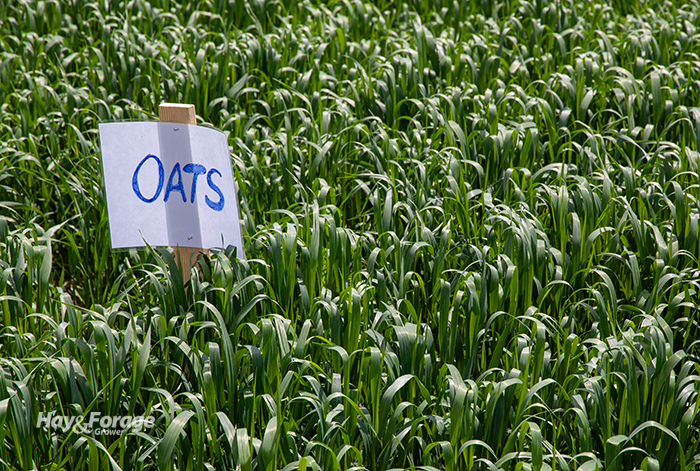Out with the wheat, in with the oats |
| By Amber Friedrichsen, Associate Editor |
|
|
 Winter wheat harvest is running ahead of schedule this year, especially in Midwestern states like Indiana, Illinois, and Ohio. An early end to wheat season opens up acreage for annual forage crops that can add grazing days to the calendar or offer extra hay. In a recent article from The Ohio State University Extension, Stan Smith says seeding warm-season annuals after an early wheat harvest may be a quick solution to overcome the summer slump. Planting oats is another option that can supply enough forage to take a late summer cutting or stretch the grazing season into the fall. “Oats are a low-cost yet high-quality feed alternative,” Smith writes. “In fact, if planted any time in July or August, there’s an opportunity to grow anywhere from 2 to 5 tons of forage on a dry matter basis while investing little more than the cost of 80 to 100 pounds of oats, 45 pounds of nitrogen, and some time and labor.” If oats will be mechanically harvested, Smith suggests seeding them on the front-end of the suggested planting window. For example, planting oats in early July can yield 2.5 tons of hay on a dry matter basis by mid-September. If fall grazing is the goal, aim to seed oats on the tail-end of the planting date range. Smith notes early August oat seedings have shown to result in higher total digestible nutrient (TDN) than July seedings. Pushing the planting date back even further can offer better forage quality, although yields will likely be lower. “The optimum combination of productivity and quality of August-planted oats arrives 60 to 75 days after planting,” Smith asserts. “Due to the heat, oats planted in July mature more quickly, and thus, rapidly decline in quality 50 to 60 days after planting.” Rates and recommendations Seed oats at a rate of 80 to 100 pounds per acre, regardless of planting date or forage variety. Smith recommends applying 40 to 50 pounds of nitrogen per acre. Fungicide applications may also help prevent crown rust — which is more prevalent in fall-harvested oats — and improve forage digestibility. Smith suggests grazing oats is the most cost-effective approach to harvesting them. More specifically, strip grazing the small cereal grain can help maximize forage utilization and extend grazing into the winter. Baling dry forage, on the other hand, can be difficult as the drying rate for oat hay is almost half of that of grass hay. Smith said it could take up to two weeks to effectively cure hay when oats are harvested as late as November. Waiting for oats to freeze, dry, and then bale later in the winter is one option; however, there is no guarantee conditions will be conducive for this strategy. “Oats won’t die until temperatures have been in the mid-20s for several hours,” Smith states. “When they finally freeze, and if it’s not a wet winter, growers may be able to let them die and dry while standing, get a few days of dry or frozen weather in January, mow them, rake them, and quickly bale them.” Chopping and ensiling oats may be a more practical option, and one that will likely result in better feed quality and less dry matter loss. Smith notes chopping oats is also less expensive than making oat baleage, and chopped forages have been shown to be 30% to 60% more digestible than long-stemmed forage. |
